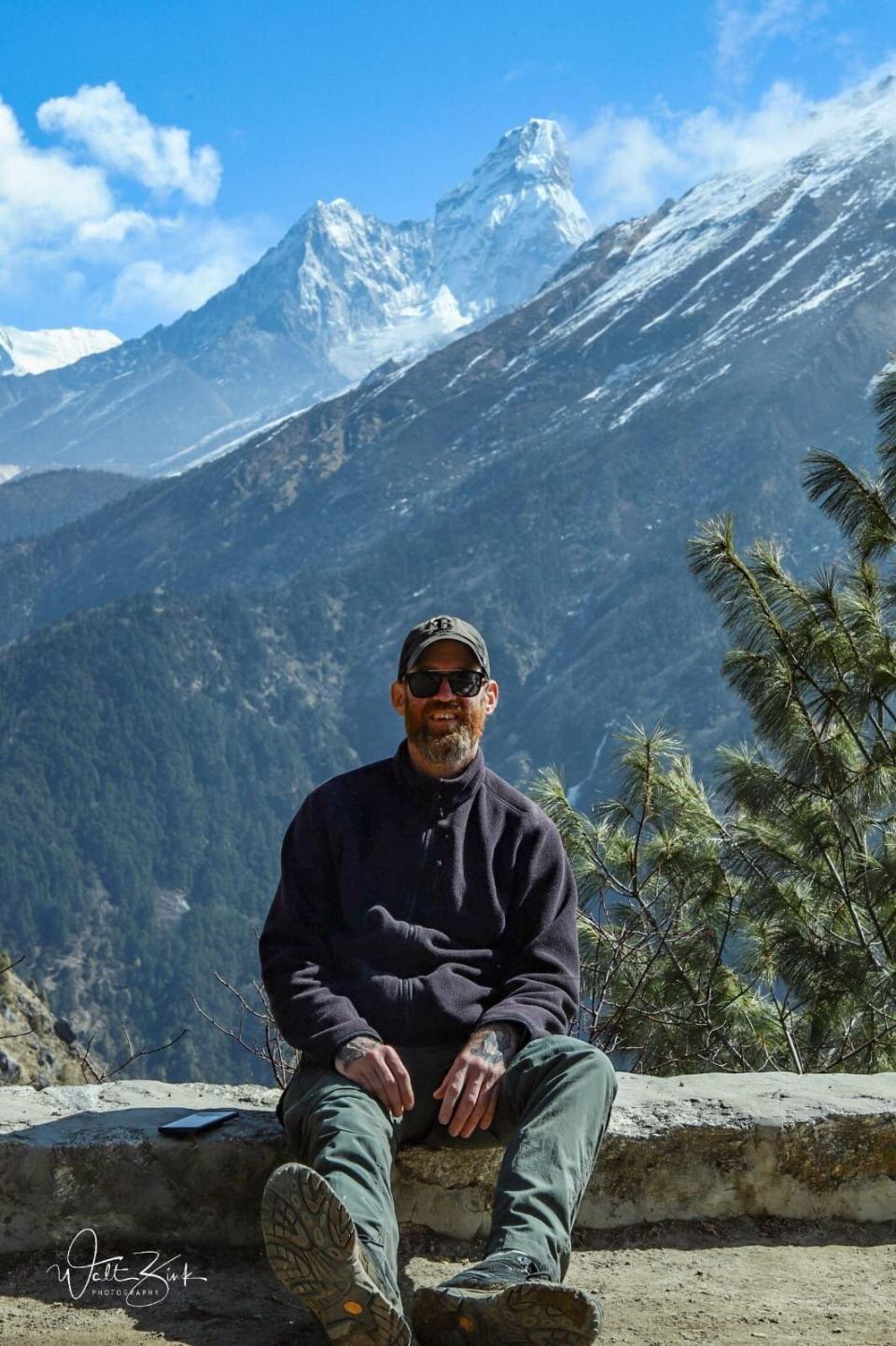Americans Trapped In Nepal Frustrated With U.S. Government's Lack Of Response
Steve Beyatte and Christina Brady-Smith were eight days into their hike across the Himalayas when Brady-Smith’s mother texted the couple warning them the airports were going to close and they needed to leave fast.
The San Francisco-based couple had spent the last 10 months traveling across the world to celebrate their marriage in lieu of a traditional wedding. They’d arrived in Nepal in February, and planned to travel around the country.
They managed to get back to Kathmandu, the nation’s capital, on March 23 to fly to the U.S. the next day. But that night, they got a call from hotel staff telling them the country would be following a shelter-in-place order the next day, and their flights were canceled.
Beyatte and Brady-Smith are among many people stuck away from home as the coronavirus pandemic spreads around the world and countries take increasingly drastic measures to slow the outbreak. In Nepal alone up to 10,000 tourists are stranded after the government sealed its borders and suspended all international flights.
The U.S. Embassy there has done little to help, said Beyatte, a 33-year-old web developer.
He and Brady-Smith were staying at a hotel with a number of other foreigners when they learned they were stuck. They watched as the British, German and Australian embassies communicated and reassured their own nationals. But when they tried to contact the U.S. Embassy for help, they didn’t get anywhere.
“They’re absolutely atrocious with communication,” Beyatte said. “It’s a nightmare.”
On Friday, Germany retrieved more than 300 people from Nepal on a rescue flight, the same day a number of French nationals were flown out of Lukla, at the base of Mount Everest. The British and Australian embassies assured their citizens that a ferry flight was in the works to assist with their return.
The U.S., meanwhile, seems to have done little to help Americans stuck in Nepal, to Beyatte’s frustration.
“The United States Embassy has been so uncommunicative about what’s going on, about what they’re doing or about how they’re helping anything,” he said. “They just aren’t putting anything out. I’ve called them a million times. They’re just not responsive at all.”
A State Department spokesperson told HuffPost that it is “closely monitoring the situation around the world, including U.S. citizen passengers on more than 50 cruise ships still at sea.”
“Serious obstacles remain as we seek to carry out an unprecedented effort to repatriate thousands of Americans from across the globe,” said the spokesperson, who also noted that as of March 24, the agency had brought home more than 9,000 American citizens from 28 countries.
“We continue to urge American citizens to utilize commercial transportation options where available. Where these options no longer exist, our teams are exploring all possible means to help Americans get home, including charter flights where appropriate,” the spokesperson added.

Beyatte and his wife have tried to get home on commercial transport but to no avail. They have booked seven different flights back to the U.S.; four have been canceled and the remaining three are likely to be. Due to the lack of information from official channels, Beyatte said he is in large part relying on a Facebook group where fellow travelers stranded in Nepal share information about their communications with the embassy, hotel openings and lockdown updates.
“The Facebook group is good because everybody’s sharing what they’re learning, but that’s the embassy’s job to send out an email to everybody or update the damn webpage,” said John Arns, a 47-year-old Oakland, California, resident who is also stranded in Nepal and regularly reading the “Americans Stuck in Nepal” Facebook group.
Arns arrived in the country in February after spending six months in India. He was due back to India last week but his March 22 flight was canceled. (On Wednesday, India announced its own lockdown after more than 600 individuals tested positive for the COVID-19 virus. It had suspended flights to and from Europe and the U.S. a week earlier.)
Instead, Arns decided he’d return home to the U.S. to care for his elderly parents, who he worries might contract the virus. But those plans were also thwarted after his March 26 flight was canceled. Left with no choice, he extended his Nepali visa and for now, he’s stranded in Nepal.
He tried to register for the Smart Traveler Enrollment Program, a State Department service that allows U.S. travelers to receive the latest security updates, but the website was not working. Discouraged and left with no other options, he turned to the Facebook group for help.
“I don’t have the confidence that my government’s going to take care of me,” said Arns.

Outside of Nepal’s capital, nearly 500 trekkers are stranded in mountains after they were unable to make it down from their trails before the lockdown went into effect. Earlier this month, the Nepali government called off this year’s hiking season — which includes treks to Mt. Everest — because of the coronavirus outbreak, hoping to deter the more than 700,000 tourists that visit the mountains every year.
Walt Zink, a 44-year-old photographer and bartender from Boston arrived in Nepal on March 10 to hike through the Everest region and take a series of portraits of people in the region. When he heard about the lockdown of the trails, he caught the last flight from Lukla to Kathmandu on March 23, in order to catch a flight from the capital back to the U.S., but he was too late. Zink had missed the last flight out of Kathmandu.
Zink, who is now staying with a friend, is monitoring that same Facebook group, hoping for good news.
It’s hard not to look at other nations and their swift action and feel defeated.
“[Those governments] are actually treating people like humans,” said Beyatte. “We’re humans too.”
A HuffPost Guide To Coronavirus
Stay up to date with our live blog as we cover the COVID-19 pandemic
Trump rejects New York’s desperate plea for ventilators
What you need to know about at-home coronavirus test kits
How to file for unemployment if you’ve been laid off
Avoiding going to the store? Here’s how to order groceries online.
What to do if you live with someone with COVID-19
How to get the most out of the weekend despite coronavirus
What coronavirus questions are on your mind right now? We want to help you find answers.
Love HuffPost? Become a founding member of HuffPost Plus today.
Related...
Displaced Families Tap Into Survival Instincts To Tackle COVID-19 Outbreak
Border Closures Separate Mother From 3-Year-Old Son Amid Coronavirus Crisis
American Students Trapped In Peru Urge Trump To Bring Them Home
This article originally appeared on HuffPost.

 Yahoo News
Yahoo News 
